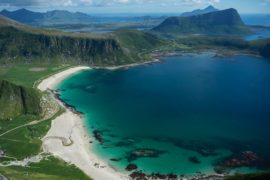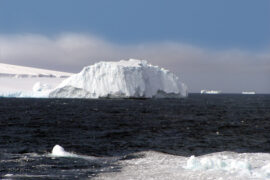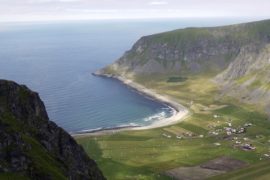Norway is the undisputed king of fjords, with more than 1,100 of the things dotted along its massive coastline.
The fjords are Norway’s most visited region – and rightly so.
With steep snow-capped mountains plunging into deep blue waters and pretty waterside villages surrounded by fields and woodlands, it really is a unique landscape.
Not only that, but the fjords provide plenty of opportunities for outdoor activities, such as hiking, kayaking and white-river rafting.
And if you’re planning a trip, there’s good news: it’s actually quite tricky to visit Norway without seeing at least one of these beautiful geological features for yourself.
You’ll find fjords pretty much wherever you go – from Lindesnes in the very south to Cape Nordkinn in the far North – but a handful of them are extra special, and certainly worth seeking out if you have the time to spare.
So, where are the most beautiful fjords in Norway and how do you visit them?
To save you lots of legwork and get you straight to the prime photo spots, we’ve picked 16 of Norway’s best and most dramatic fjords.
Geirangerfjord
Romsdalsfjord
Hjørundfjord
Sognefjord
Nærøyfjord
Aurlandsfjord
Hardangerfjord
Nordfjord
Vistenfjord
Lysefjord
Trollfjord
Lyngenfjord
Trondheimsfjord
Oslofjord
Vestfjorden
Isfjord
This map shows you where they are in relation to big cities like Oslo.
1. Geirangerfjord
Geirangerfjord is, without doubt, Norway’s most famous fjord. Appearing in the Norwegian movie The Wave and Disney’s Frozen has certainly helped, and Geirangerfjord is among the country’s most visited tourist attractions.
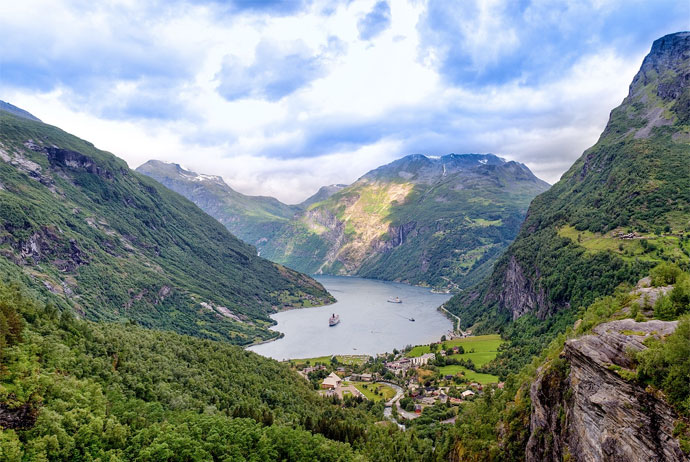
Along with Nærøyfjord, some 120km away, it forms part of a Unesco World Heritage Site. Make no mistake, this is classic fjord scenery!
The fjord is located in the district of Møre og Romsdal, two and a half hours from Ålesund.
Wherever you stop near the fjord, you’ll be treated to stunning views of steep mountaintops rising quickly out of the water.
There are several impressive waterfalls here too, including the jaw-dropping Seven Sisters (which, unbelievably, doesn’t even make the top 40 in the list of the highest Norwegian waterfalls).
However, all of this stunning scenery is actually under threat.
A huge chunk of a nearby mountain called Åknesfjället is slowly breaking free, and is expected to plunge into the fjord in the not-too-distant future, causing a huge tsunami that is likely to wipe out the small village of Geiranger.
In 1934, a similar landslide at Tafjorden (around 20km to the northeast), caused a series of vast waves that killed 40 people.
The mountain at Geirangerfjord is monitored closely, though, and experts expect to be able to give plenty of warning so that locals can evacuate.
Our advice is to go soon, before the fjord changes forever!
Getting there
Geirangerfjord is best visited in the summertime. You can get there by cruise from Ålesund, or by road, approaching via a nerve-wracking series of hairpin turns called Trollstigen (see below).
Where to stay
The Grande Fjord Hotel is just over a mile from the village of Geiranger and has smart, clean rooms, some with balconies overlooking the fjord. Alternatively, Geirangerfjorden Feriesenter offers compact self-catering units with exceptional views.
2. Romsdalsfjord
Norway’s ninth longest fjord, the Romsdalsfjord is surrounded by towering snow-clad mountains in winter and fields of wildflowers in spring.
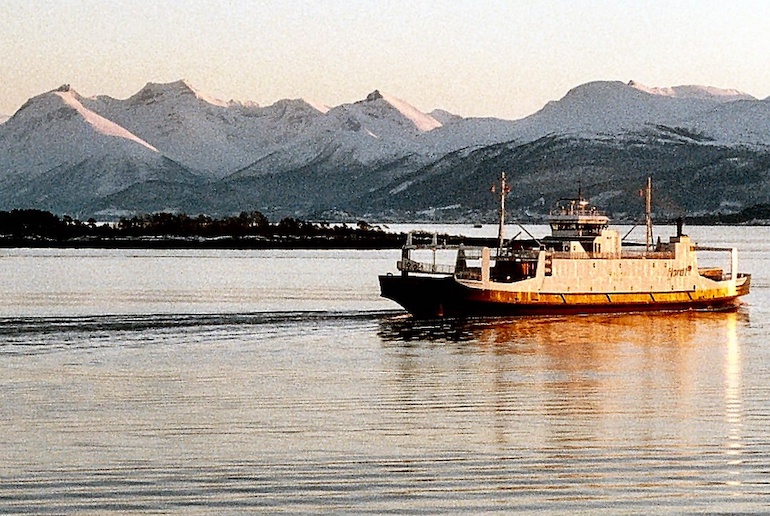
Unusually for Norwegian fjords, it’s home to several islands and its clean waters are rich in marine fjord, so popular for fishing.
At the Romsdalsfjord’s eastern tip lies the pretty village of Isfjorden, while the larger town of Åndalsnes sits on its southern shores.
Åndalsnes makes a great base from where to take a trip along the exhilarating Trollstigen, Norway’s most dramatic mountain road with 11 hairpin bends.
If you don’t fancy driving it yourself – and we don’t blame you, it’s pretty hairy! – you can take this guided tour, where experienced drivers do the scary bit for you!
Getting there
The best way to get to Åndalsnes is by train, on the scenic Rauma line from Dombas, which has regular connections to Oslo and Trondheim.
There are also regular buses to Molde and Ålesund.
Where to stay
Right in the centre of Åndalsnes, the Grand Hotel is the smartest place to stay, with stunning views of the lake and mountains.
A cheaper option is the Romsdalseggen Camping in the nearby village of Isfjorden.
3. Hjørundfjord
Deep and narrow, the 35km long Hjørundfjord is one of the less-visited fjords, its blue-black waters overlooked by glowering mountains that plunge straight into the fjord.

A branch of the Storfjord, it lies south of Ålesund and is surrounded by the stunning forested Sunnmøre Alps, some of whose peaks reach some 1,500 metres above the water.
There are few settlements along the shores of the fjord, as the steep mountainsides make building difficult, and people tend to come here for its brooding tranquillity and beautiful walks in the surrounding mountains.
The hike from the pretty village of Øye up Mount Slogen is challenging but rewards you with great views over the fjord.
Getting there
From Ålesund, it takes around two-and-a-half hours to drive to Sæbø, on the western shores of the fjord, via the Solavågen-Festøya car ferry across the Storfjord.
Alternatively, Hurtigruten boats call in to the Hjørundfjord (see here for the low-down on travelling on the Hurtigruten).
Where to stay
The comfortable and smart Sagafjord Hotel in Sæbø sits right on the waterfront, or splash out on the historic – and supposedly haunted – Hotel Union in the remote village of Øye.
4. Sognefjord
Sognefjord is the longest fjord in Norway, and also the deepest.
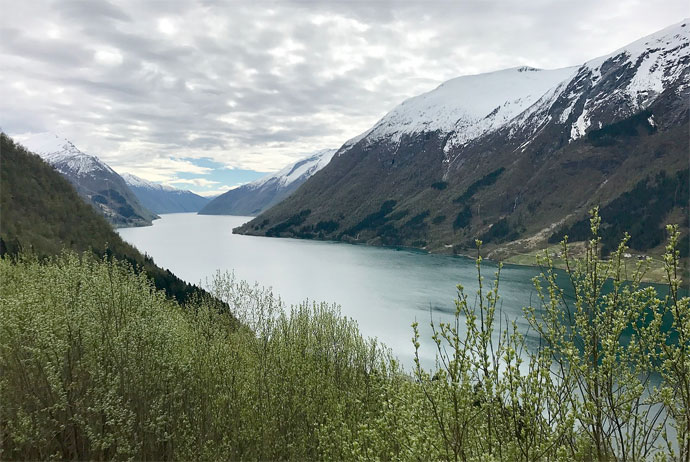
Located in the district of Sogn og Fjordane in western Norway, it stretches out in shades of brilliant blue and emerald green for more than 200km, and is more than 1.3km deep in parts.
This is more of a region than an attraction that you’d just go and look at, so it requires a bit more effort to really get to grips with.
You can spend time driving between idyllic mountain villages, hiking (try the Jotunheimen National Park at the fjord’s eastern end), or checking out the beautiful wooden stave church in Kaupanger.
Jostedalsbreen – mainland Europe’s largest glacier – is worth a stop if you want to try hiking on the ice.
There’s lots to see in the Sognefjord region and journeys can be surprisingly slow.
Fortunately there are plenty of places where you can enjoy a cosy overnight stop, usually with the bonus of great views to wake up to.
Getting there
From Bergen, the Sognefjord region is best reached by car (it takes around four hours to get to Sogndal).
Where to stay
Lavik Fjord Hotell is pricey but some of the modern rooms offer great views. There are also some excellent hiking trails nearby. Botnen Camping has cheaper bunk rooms and simple cottages.
5. Nærøyfjord
Nærøyfjord is actually a part of Sognefjord. Along with Geirangerfjord (see above) Nærøy makes up part of a World Heritage Site.
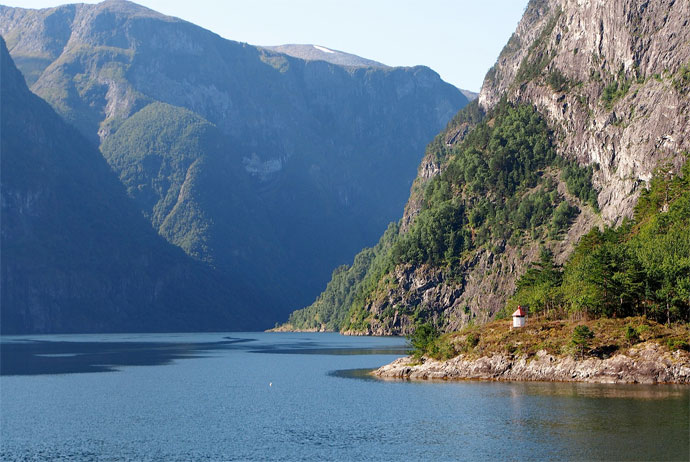
It’s 17 km long but in places can be extremely narrow – just a couple of hundred metres across at its thinnest point.
The fjord is surrounded by mountains that soar more than a kilometre above the waterline, making this one of the most dramatic places to visit in all of western Norway.
Even if it rains (and it probably will) this is a spectacular place to take photos, have a picnic, or simply stare in awe.
It’s also a great place to go kayaking – this full-day guided kayak trip from Voss gives you the best vantage point to see the fjord, its waterfalls and mountains.
Getting there
Nærøyfjord is a popular stop on tours that start from Oslo and Bergen. This trip from Bergen includes a ride on the fantastic Flam railway and a boat trip on the Nærøyfjord.
You can also get there independently by rental car from Bergen – it’s a drive of about two hours and fifteen minutes from Bergen to Gudvangen at Nærøyfjord’s southern tip.
Where to stay
The Gudvangen Fjordtell is a comfortable, upmarket option in in the village of Gudvangen right at the southern tip of the Nærøyfjord. Alternatively, there’s the simpler good-value Gudvangen Budget Hotel.
6. Aurlandsfjord
One of Norway’s narrowest, deepest and most beautiful fjords, the Aurlandsfjord is actually an offshoot of the Sognefjord, along with its western neighbour the Nærøyfjord.

Jutting out some 650 metres above the fjord, the Stegastein viewpoint is the best place to get dramatic views over the water and along the fjord.
At the fjord’s southern end sits the village of Flam, best known as the terminus of one of Norway’s – and indeed the world’s! – most picturesque railway trips.
Getting there
The most fun way to reach the Aurlandsfjord is to take the Flamsbana railway to the village of Flam, at the fjord’s southern tip. For more on the journey, read our guide on the Bergen to Flam railway.
This day-trip from Bergen includes a ride on the Flam railway plus a boat trip on the Aurlandsfjord.
Alternatively, you can take a ferry cruise all the way from Bergen to Flam, which runs along the Aurlandsfjord.
Where to stay
The Flåm Hostel has good-value rooms in the village close to the waterfront, or there’s the pricier Flåmsbrygga Hotel near the train station and overlooking the fjord.
Alternatively, the comfortable Heimly Pensjonat has pretty gardens and views over the fjord.
7. Hardangerfjord
Hardangerfjord is Norway’s second longest fjord. From its mouth, which opens up to the North Sea some 80km south of Bergen, Hardangerfjord stretches inland towards the Hardangervidda National Park.

This region is home to the picturesque village of Odda, situated at the very end of the fjord, which serves as a beautiful base for sightseeing and outdoor activities.
More famously, it’s also home to the rock formation called Trolltunga (the ‘troll tongue’) which attracts tens of thousands of hikers every summer and should be on any serious fjord fan’s bucket list.
From Odda, there are some very good guided tours that take in Trolltunga and the fjord. For more on Odda, see our guide to What to see and do in Odda.
Getting there
The drive to Odda takes around four hours from Stavanger, three hours from Bergen or two hours from Haugesund. You can also get there directly by express bus from Oslo, Bergen, and Haugesund.
Where to stay
The rooms at Trolltunga Camping are functional and fairly cheap (by Norwegian standards, anyway), while the Trolltunga Hotel has simple but comfortable rooms in Odda, some overlooking a lake.
8. Nordfjord
Nordfjord is another gorgeous slice of scenery in the Sogn og Fjordane region of western Norway.
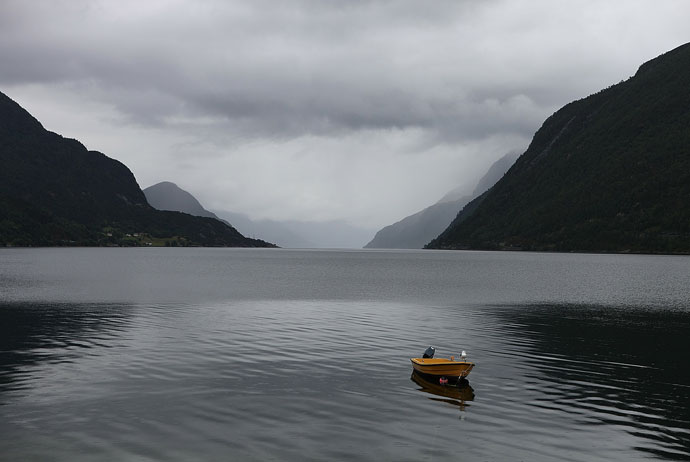
Apart from the great views, it’s also near the Jostedalsbreen glacier (see above) and the Loen Skylift at Innvikfjord (a branch of Nordfjord), which brings you to the top of the 1km-high Mt. Hoven in just five minutes.
Getting there
The village of Nordfjordeid, at the eastern end of the fjord, is the best place to stay near the fjord. It’s a three-hour drive from Ålesund.
However, you can also reach Nordfjordeid by express bus from Oslo, and by express boat from Bergen.
Where to stay
The upmarket Nordfjord Hotel in Nordfjordeid has reasonable rooms, along with a pool and a spa, or there’s the cheaper Sentrum Hotel, with basic, clean rooms.
9. Vistenfjord
Due to their dramatic scenery and picturesque villages, some of the southern fjords are hugely popular – and rightly so – and can get very busy in peak times.
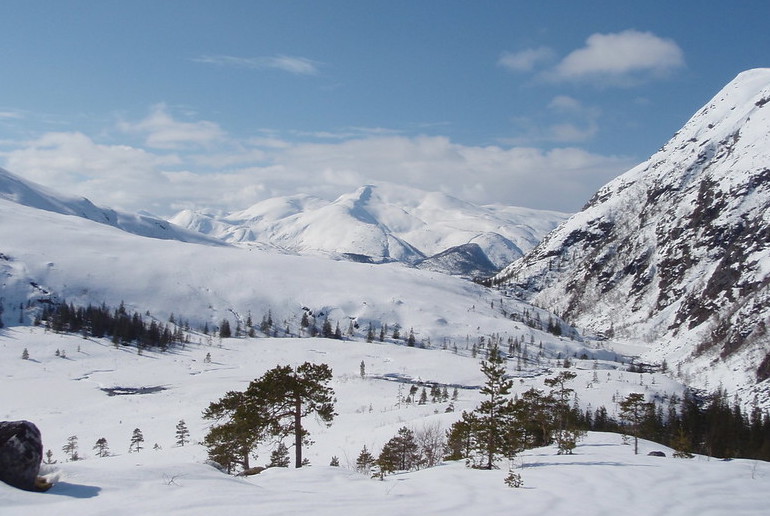
Statskog SF (CC)
So if you’re looking for more wild and rugged landscapes, the 22km-long Vistenfjord is a quieter hidden gem.
Also known as “the unknown fjord”, it’s tucked away between the Vega Islands and the Seven Sisters mountain and extends into the wild and remote Lomsdal-Visten National Park.
Great for hikes and kayaking, it’s a peaceful fjord, surrounded by mountains and ancient farming communities, and is known for its biodiversity.
Getting there
Daily express boats from Tjøtta or Forvik run along the Innervisten to Aursletta and Bønå at the head of Vistfjorden.
Where to stay
This pretty cottage in Vevelstad, with views over the water makes a great base for exploring the Vistenfjord.
10. Lysefjord
Lysefjord is home to the 604m-high Preikestolen, or ‘Pulpit Rock’. This (admittedly rather big) wedge of rock attracts an incredible 300,000 visitors a year – even Tom Cruise has stopped by to film scenes for Mission Impossible 6.

If you want to have your own Tom Cruise moment, this tour includes transport from Stavanger, plus an experienced guide to take you on the 4-6 hour trek up to the top of the dramatic summit.
The rock isn’t the only reason for you to check out the area around Lysefjord.
The area offers plenty of hiking trails, for example, and is also home to the longest wooden staircase in the world, Flørli 4444 (with, you guessed it, 4444 steps).
There’s also Kjerag, a huge boulder that’s suspended high up between two sheer rock faces.
This guided tour takes you up to the Kjerag rock, where you can get the obligatory shot standing on the boulder – if you’re brave enough!
The picturesque village of Lysebotn, at the end of the fjord, is a good place to spend a few days.
The best way to explore the Lysefjord is from the water itself: this guided kayak trip is a gentle paddle round the beautiful fjord, past waterfalls and into caves.
Getting there
Lysebotn is only reachable by ferry in winter (or, in summer, via 27 hairpin turns on the road called Lysebotnvegen).
Lysefjord itself is around an hour from Stavanger by boat. Fjord sightseeing tours are available, and you can jump on a bus tour to the starting point of the Pulpit Rock trail.
If you’re driving, you can take the car ferry to Lysebotn, jumping off point for the hike up to the Kjerag boulder, or you can get here from Stavanger on a guided trip which includes all transport plus the option to add on a fjord cruise.
Where to stay
In summer (May–Oct), Lysefjorden Turisthytte offers simple lodging and is in a handy spot for touring the local area.
Alternatively, there’s the Flørli 4444 Hostel, which sits at the bottom of the Flørli steps and can only be reached by boat.
It has a variety of accommodation options including apartments on the shores of the fjord, dorm beds and camping.
11. Trollfjord
Up in the Arctic, Trollfjord (yep, trolls again) is one of northern Norway’s best-kept secrets.

Located between the Vesterålen and Lofoten islands, Trollfjord is only a 2km-long fjord but its shape, with a narrow channel opening up into a large oval bay, makes it feel even more hidden.
The fjord is also surrounded by steep mountainsides, which seem to spend much of the year in black and white, thanks to the dark colour of the rocks and the thick snow that clings to them.
The frigid water in the fjord looks like dark and inky, and you’ll sometimes see eagles circling overhead, adding to the edge-of-the-world feel.
The tallest mountain here, Mt Trolltind, reaches 1084m above sea level.
Getting there
Trollfjord can be visited either by Hurtigruten cruise (see our guide for more on travelling on the Hurtigruten) or on a boat trip from Svolvær in the Lofoten Islands.
Plenty of tours leave from Svolvær, including this eco-friendly Trollfjord cruise on a sailing yacht.
The fjord is also a good place for wildlife trips, such as this RIB tour from Svolvær that heads out into the fjord in search of a variety of birds and wildlife, including seals and eagles.
Where to stay
This is a wild part of Norway and the only accommodation nearby is this simple hut, run by the Norwegian tourist authority.
For something a little more comfortable, base yourself in Svolvær at the Scandic Svolvær Hotel, on a tiny island in the middle of the harbour.
12. Lyngenfjord
Lyngenfjord is another fjord in the north of Norway, located in the Lyngen Alps near Tromsø.
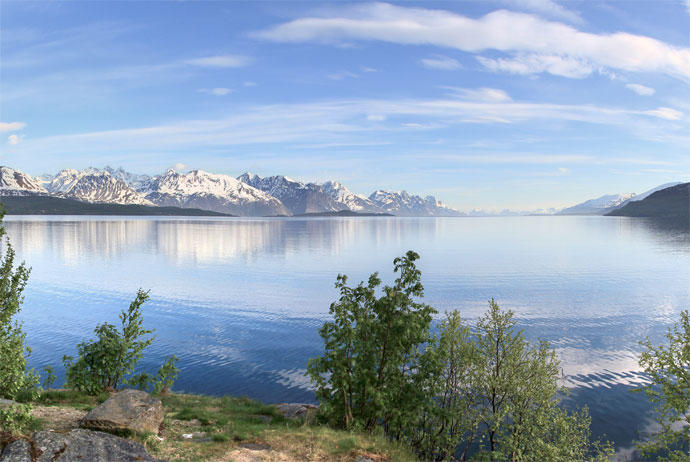
At 82km long it’s absolutely huge, and it stretches through a region that’s popular with people looking to see the northern lights.
The high peaks of the Lyngen Alps create a bit of a rain shadow, which means clear skies are more likely here than in many other parts of the country.
There’s more on seeing the northern lights in Norway in this guide.
On the edge of the Lyngenfjord, the village of Lyngseidet is home to the world’s northernmost whisky distillery, where you can do a tour and tasting session with views of the fjord.
Getting there
From Tromsø, you can get to the village of Lyngseidet by car or bus (timetables here).
Where to stay
The friendly Magic Mountain Lodge in Lyngseidet has doubles rooms with views of the fjord and a dorm, plus a communal kitchen and sauna.
13. Trondheimsfjord
Trondheimsfjord is one of the more accessible fjords in Norway, as it’s situated right by the city of Trondheim.

The fjord stretches from the Norwegian Sea all the way to the town of Levanger, around 50km to the northeast.
Why should you visit? Well, there’s the big skies, the birdlife, the rolling countryside, the open expanses of glittering blue water… need we go on?
Getting there
The fjord runs right past Trondheim so if you’re visiting that city, you’re already by the water.
There are several ferries and boat tours (in summer only) that take you out onto the fjord. For example, you can travel to the island of Ytterøy or to visit the former prison island and fortress at Munkholmen.
Where to stay
Trondheim has a few cheap bed and breakfasts and apartments, plus dozens of hotels.
The Trondheim Vandrerhjem, with dorms and twin rooms, is a good bet if you’re on a budget.
14. Oslofjord
If you’re only in Norway for a couple of days but would like to see at least one fjord, don’t worry! Oslo has got you covered.

The Oslofjord might not be as spectacular as the fjords of western Norway but it still offers plenty of nice islands (and beaches!) for a summer visit.
It’s also one of the easiest fjords to visit on a guided tour.
This hybrid electric boat trip is a good eco-friendly option, and includes brunch and a glass of bubbly while sailing silently through the fjord.
Or, you can explore the fortress island Oscarsborg, the old monastery on the island Hovedøya, or the Bygdøy Peninsular, which has some great museums.
There’s more on exploring the Oslofjord in this guide.
Getting there
Several ferries and boat trips leave the harbour at Aker Brygge daily, or you can travel through the Oslofjord and Skagerrak/Kattegat on one of the ferries connecting Norway with Denmark.
There’s more on getting around the Oslofjord on a budget here.
Where to stay
Hotels in Oslo are expensive! Try one of these great hostels if you’d rather avoid paying for a hotel (most offer private rooms), or one of these cool Airbnbs.
15. Vestfjorden
If you want to visit an off-the-beaten-path fjord for a more tranquil experience, the Vestfjorden, whose name means “West fjord”, is a good bet.
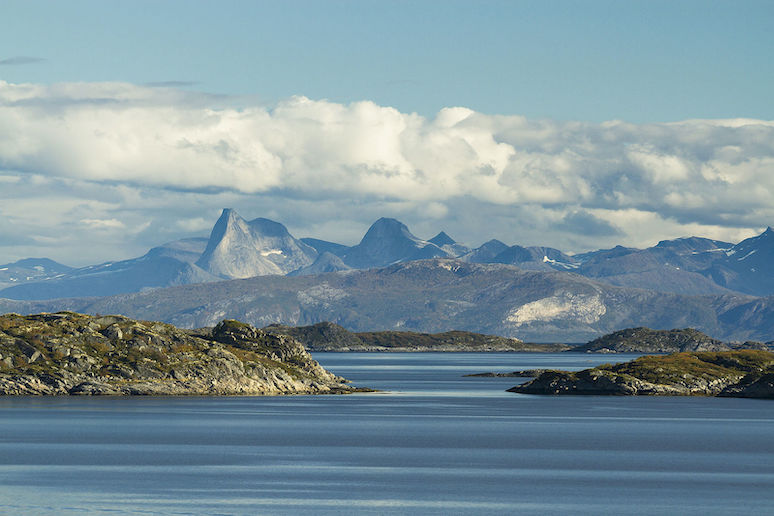
Almost a hundred miles long, it runs between the Lofoten Islands and the northwest coast of mainland Norway.
At its southern end where it meets the sea, it’s about 50 miles wide, so is one of the largest fjords.
But several smaller fjords run off it, such as the Ofotfjorden and the Tysefjorden at its northern end, and the tiny Nusfjord, to the west.
This fun fishing and foraging trip takes you out onto the Vestfjorden to catch your lunch of haddock, mackerel or cod, which you will then cook and eat, before docking on the pretty island of Skrova for a walk to secluded white sand beach.
Getting there
The northern end of the fjord is most easily accessed from the city of Narvik.
Home to Norway’s northernmost train station, Narvik is served by the Ofotbanen, also known as the Arctic Railway, from Kiruna in Sweden.
If you fancy riding a stretch of this scenic route, buy tickets here.
Where to stay
Or, for something cheaper, the Bogen Hostel has simple rooms and a caravan looking out over the Ofotfjorden.
16. Isfjord
Now we’re really getting off the beaten track. More than 800km north of the Norwegian mainland, the wild and icy Svalbard archipelago lies high up in the Arctic Circle.

Its main island, Spitsbergen, is wrapped around the dramatic Isfjord, some 100km long.
Fed by many side fjords which freeze over most winters, the Isfjord itself is usually ice-free due to the warming effects of the Gulf Stream.
With two national parks along its shores, it’s home to an extraordinary variety of birdlife and is a fantastic place for wildlife-spotting.
Species regularly seen here include Arctic foxes, reindeer and polar bears on land, with whales, seals and walruses in the water.
It’s also a great place to see spectacular northern lights displays.
The island capital, Longyearbyen sits on the fjord’s southern side, and plenty of tours head out from here to explore the Isfjord and the surrounding wilderness.
Click here for more on things to do on Svalbard, such as this tour of a historic coal mine.
Getting there
By far the easiest way to get to Svalbard is to fly with Norwegian from Oslo.
Where to stay
Most of Svalbards’ accommodation is in Longyearbyen : Gjestehuset 102 hostel has simple good-value rooms, while the Svalbard Hotell Polfareren offers pricier boutique-style comfort.
FAQ
Where are the best fjords in Norway?
Since the fjords are often quite hard to get to, it would take a long trip if you wanted to visit all 16 of our favourite fjords.
So, if we had to pick just one area to visit, we would choose the region around Bergen.
From Norway’s second city, you can visit get two of our favourite fjords on a day trip by boat – the Sognefjord and the Aurlansfjord – or you can take the ferry there and get Norway’s most dramatic mountain railway back again.
You can also get to two more of our favourite fjords – Nærøyfjord and Hardangerfjord – in a scenic drive of not much more than two hours from Bergen.
Why does Norway have so many fjords?
The fjords are u-shaped valleys that were created by glaciers over millions of years.
The glaciation took place below sea level and since Norway has a long coastline and a cold climate, hundreds of fjord developed along its coast.
Are fjords only in Norway?
The simple answer is no – New Zealand, Chile, Canada and Greenland all have fjords.
The reason we associate them primarily with Norway is that fjord is a Norwegian word (of Viking origin) that has been adopted throughout the world to describe the dramatic glacial indents.
How deep are Norway’s fjords?
The depth of the fjords varies, but generally speaking they are stretch down a pretty long way! Sognefjord is Norway’s deepest fjord – up to 1.3km at its deepest point.
When is the best time to visit the Norwegian fjords?
Summer is peak season in the fjords. From June to early September, you’ll get long hours of daylight, mild temperatures and a good chance of some sunshine.
It’s also the best time for outdoor activities, such as hiking, white water rafting and kayaking.
However, it’s also when the fjords are at their most crowded and accommodation is at its priciest. To avoid the crowds, it’s worth considering a visit in autumn or winter.
Seeing the fjords in autumn can be beautiful, when the leaves are turning beautiful orange, brown and gold colours.
And winter, of course, can be spectacular, with the mountains clad in snow and ice, and the popular sights are much quieter.
You can even do some some outdoor activities such as this winter snowshoe hike from Odda, and you’ve got a good chance of seeing the spectacular northern lights.
If you are planning a winter trip, however, you’ll need to check the road conditions before travelling as some passes and road will be impassable due to snow.
Don’t forget insurance – even if your trip has already started!
It’s no good visiting Norway’s beautiful fjords if you don’t have adequate travel insurance.
Even though travelling in Norway is safe, we strongly recommend getting a decent policy for your trip.
It really can make a world of difference if you lose your valuables or get involved in an accident.
World Nomads provides travel insurance for travelers in over 100 countries. As an affiliate, we receive a fee when you get a quote from World Nomads using this link. We do not represent World Nomads. This is information only and not a recommendation to buy travel insurance.
Map of the best fjords in Norway
See also:
Where to stay to visit the fjords
Cool eco-friendly places to stay in Norway
The best places to stay in Norway




